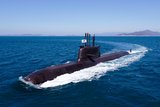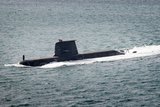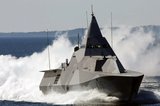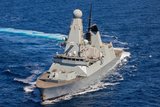Problem-plagued Kuznetsov saga continues
One problem after another has afflicted the modernisation of Admiral Kuznetsov, pictured in Murmansk. (Photo: 35th Ship Repair Plant)
Vladimir Korolev, VP of United Shipbuilding Corporation (USC), shone a little light on 23 June on the troubled and sluggish programme to refit Admiral Kuznetsov, which has been inactive for years.
Speaking to official Russian news agency TASS, Korolev said that work at the 35th Ship Repair Plant in Murmansk — including general repairs plus upgrades to the propulsion system and weaponry aboard the 59,100t Admiral Kuznetsov — would finally be completed by early 2023, before sea trials and a return to the Russian Navy at the end of that year.
This still marks yet another delay in the
Already have an account? Log in
Want to keep reading this article?
More from Naval Warfare
-
![Is South Korea finally being taken seriously for Western submarine programmes?]()
Is South Korea finally being taken seriously for Western submarine programmes?
South Korean shipbuilders are beginning to make their mark beyond Asia, competing for major North American and European submarine programmes and becoming serious contenders on a global scale.
-
![AUKUS Pillar 2 could narrow focus to “four key areas” says UK official]()
AUKUS Pillar 2 could narrow focus to “four key areas” says UK official
Few concrete ideas have emerged so far on which “advanced capabilities” will be brought forward under Pillar 2 of the AUKUS partnership, but the Pentagon’s review of the programme could bring more clarity.
-
![Sweden’s decision on four new warships inches closer as it eyes UK, France and Spain]()
Sweden’s decision on four new warships inches closer as it eyes UK, France and Spain
Sweden decided last year that it wanted a significantly larger warship for its Luleå Class programme than originally planned, with three likely contenders that could potentially deliver within the country’s tight schedule.
-
![US Coast Guard prepares procurement of next-gen surface search radar]()
US Coast Guard prepares procurement of next-gen surface search radar
The NXSSR will replace five in-service capabilities and be the US Coast Guard’s primary collision avoidance system.
-
![MBDA-led DragonFire’s latest trials move the LDEW system closer to UK Navy integration]()
MBDA-led DragonFire’s latest trials move the LDEW system closer to UK Navy integration
The DragonFire lines up with other European laser-directed energy weapons being developed in collaboration with MBDA.























